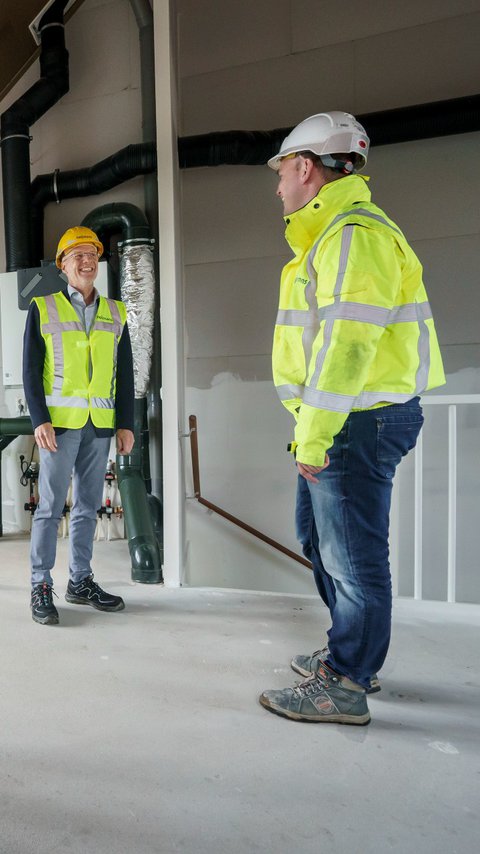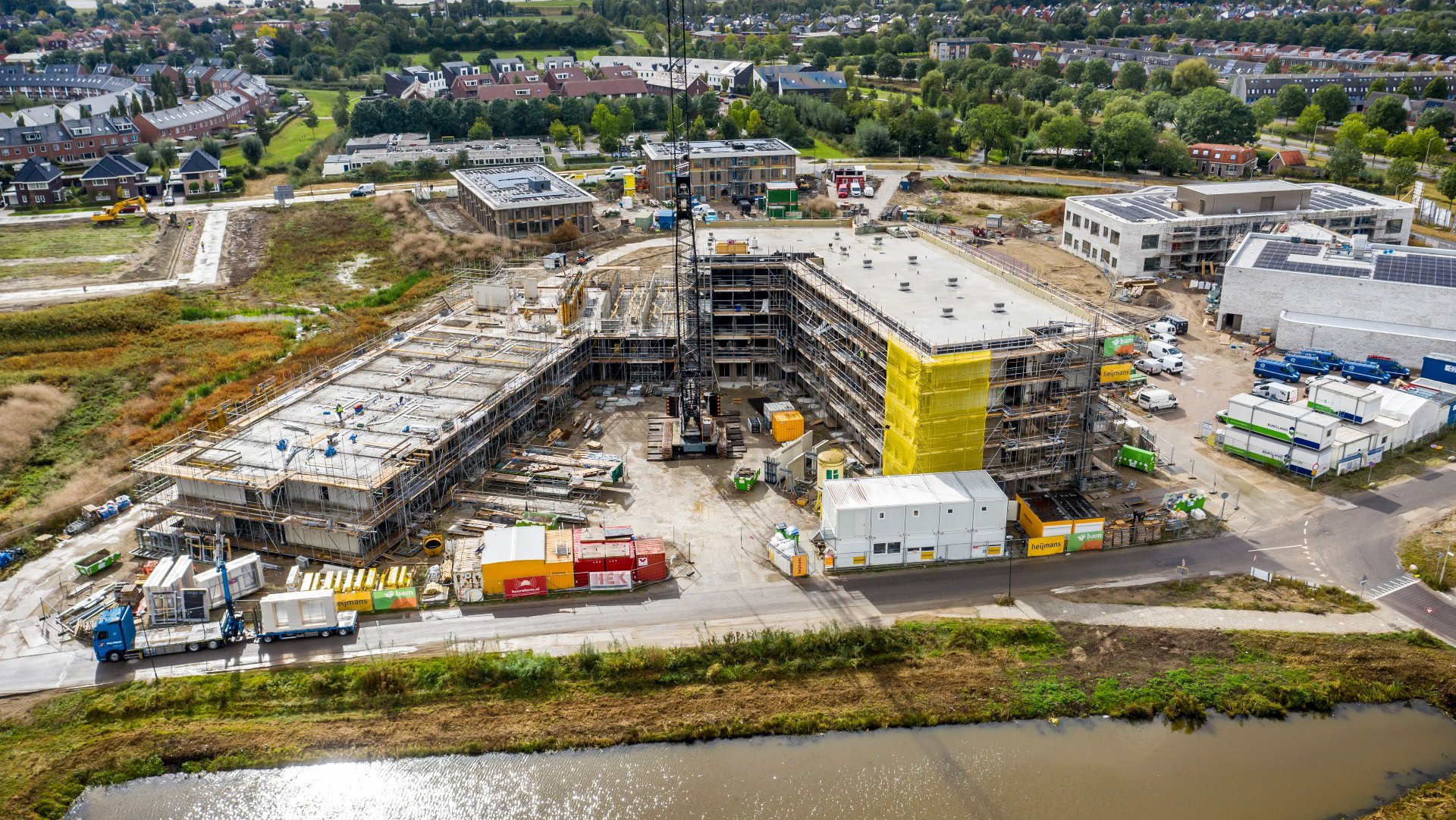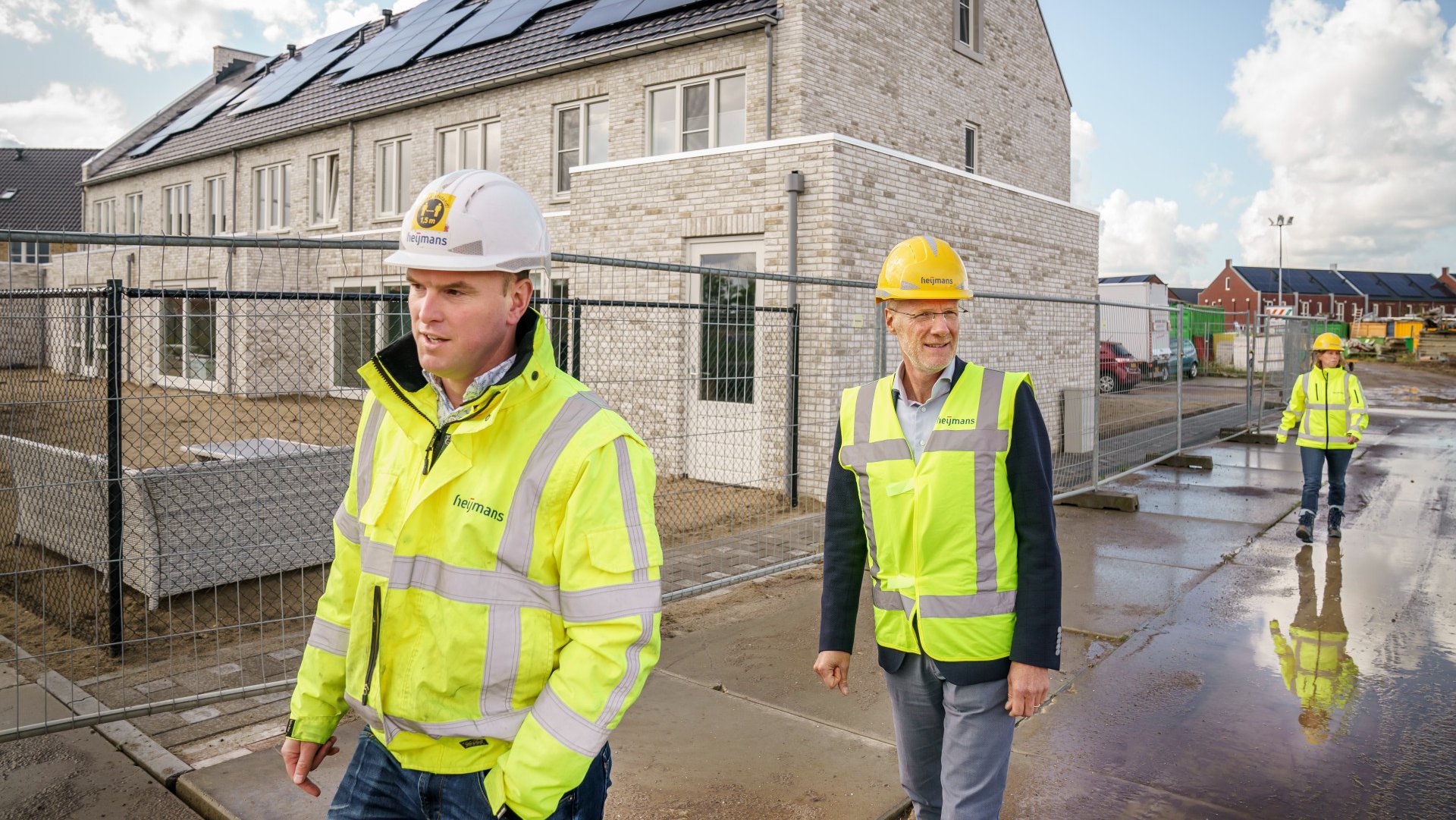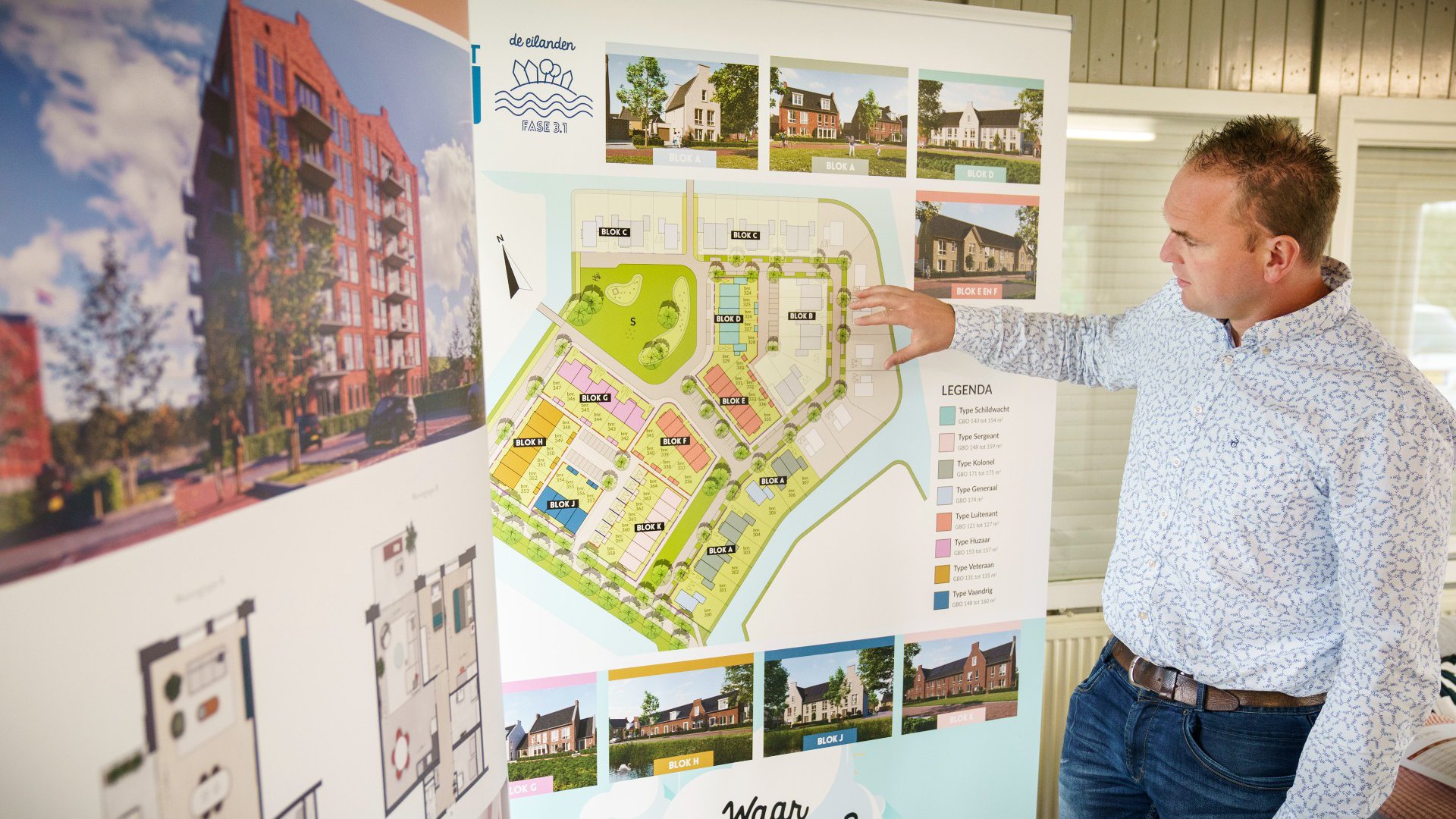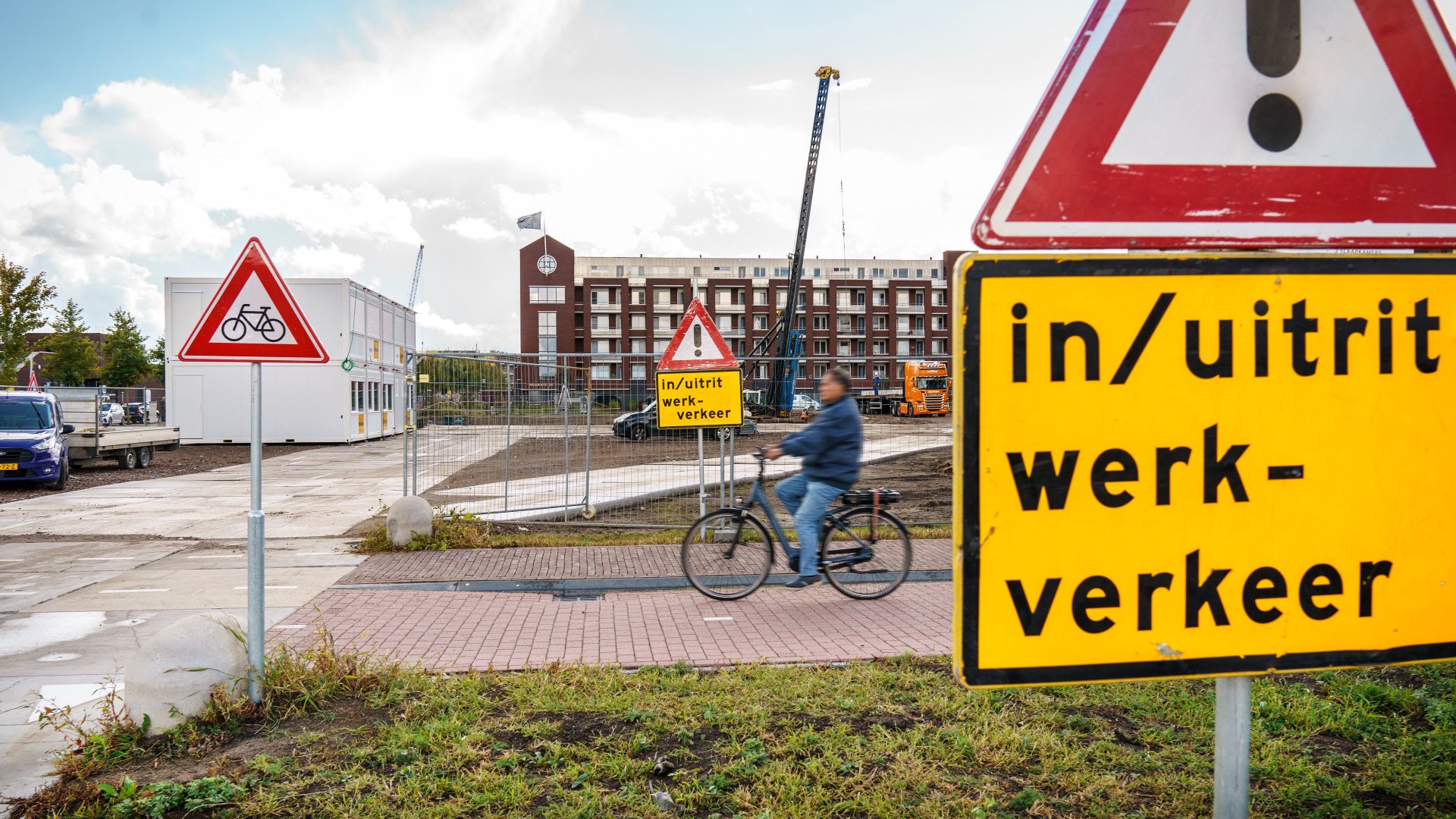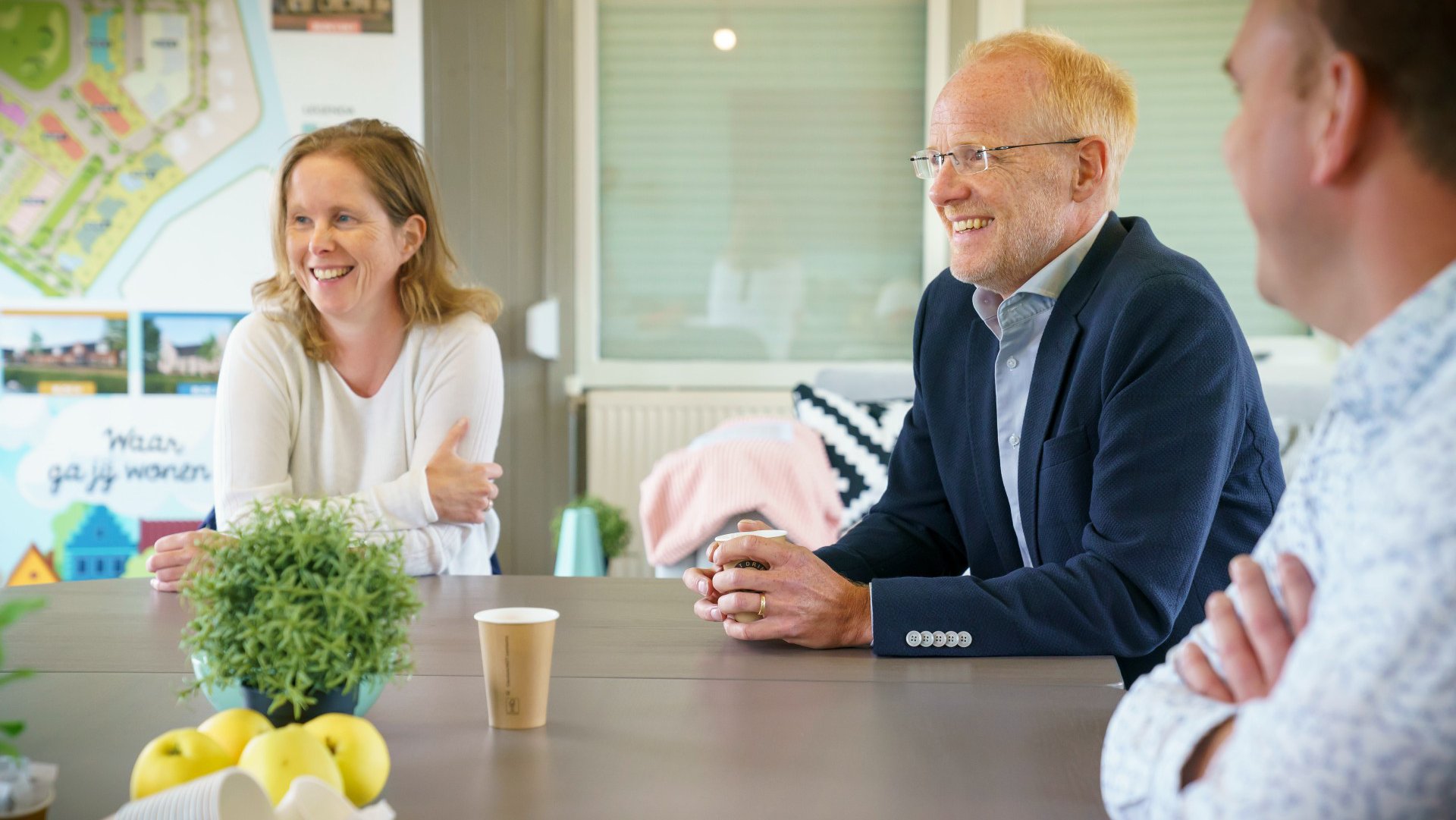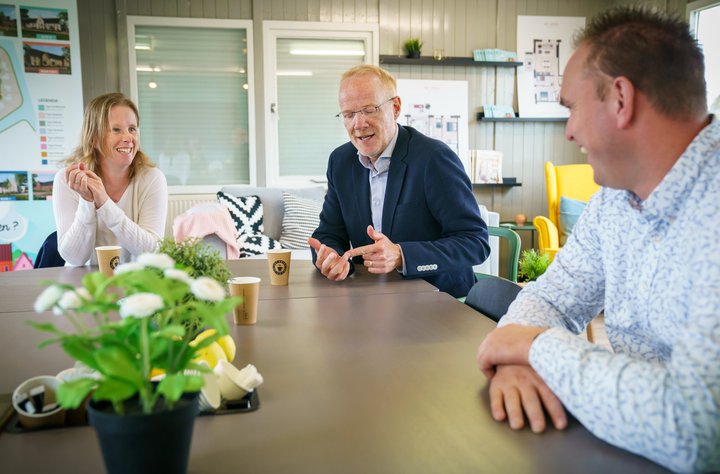
If developers and designers keep a close eye on safety issues, they make their colleagues’ work on our buildings sites a lot more comfortable. And that realisation is growing. That said, we could do with more discussion of safety issues, say colleagues Gabriella van Gelder, Remco Overmars and Maarten Schrauwen. “Everyone can play a part in improving safety.”
This takes us to one Tuesday afternoon in the Hoog Dalem new-build neighbourhood in Gorinchem. The busy trunk road we’re on has a shopping centre and a newish building site. “Here we are building 48 apartments and a commercial plinth, in a seven-storey building”, says project leader Maarten Schrauwen, who is responsible for this residential building project. The foundation for the building consists of sixteen-and-a-half-meter long piles, each weighing 10 tonnes. He points to the pile driver and the public road: “If you calculate the fall radius, both the pavement and the cycle path are in the danger zone. Ten years ago you would have thought: ‘Ah, it’ll be okay’. You certainly don’t think that any more. You see the risks and you take extensive measures. Turning a blind eye is longer an option.”
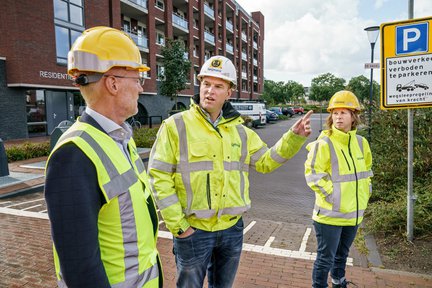
The fact that the project has two traffic managers shows the company takes this work seriously. The project also has barriers, warning signs, a temporary zebra crossing and a very large traffic mirror for exiting freight traffic. Maarten adds another sum: a 10-tonne pile weighs exactly the same as two ambulances. So how much does your responsibility weigh?

Ticking off the boxes
Even just a few years ago, ‘on a wing and a prayer’ was the was classic sigh of relief in the construction industry: “The architect drew up the health and safety plan. Boxes were ticked and signed off on. Then in the drawer it went”, recalls developer Remco Overmars, Maartens’ colleague in the Property Development business unit. “Now safety is a part of the development phase. And rightly so. Because a house that’s good to live in is also a house that’s safe to build for our colleagues on the building site.”
And there are plenty of examples, like Willemspoort-Zuid in Den Bosch. Remco: “Heijmans is developing eight buildings with a total of 500 apartments on a ‘postage stamp’. The project is quite complex logistically, because we have to lift prefab sections over a parking garage, while that’s already being used by the first residents! How do we do that safely? We started working that out early, together with our colleagues at Residential Building and Property Development, plus Aboma, our external health and safety advisor.”
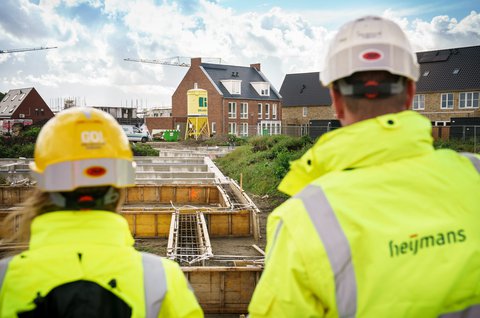
In the Hoog-Dalem visitor centre, project leader Maarten points to a section on an area map: “Here we’ll be building a large detached house. Because you usually only begin construction once it’s been sold, the surrounding homes may already have been delivered. Do you really want all that heavy traffic through a new neighbourhood, which only has one access point, all for that one house? While children are playing in the street? No, you don’t.” With that in mind, Property Development generally opts for construction before sale, says Remco. Motto: you can build safety into a development.
Safety also means open and honest discussions with each other
Robot
Times have changed, confirms Gabriella van Gelder. She is a design manager at Residential Building. Part of her work is to increase safety before a single hole has been dug: “In the design phase, you work from rough to fine. And that also goes for safety: you start by looking at the whole area and you end with maintenance.”
For instance, she will think long and hard about the cleaning of facades that only exist in her computer. Gabriella: “Lots of high-rise buildings have roofs full of solar panels, which means there’s no room for façade cleaning equipment. That’s the case with the 735 student flats we are set to build on the TU Eindhoven campus – two residential tower blocks and a low-rise building.” The design solution: a project-specific cleaning robot, which can also carry out maintenance inspections. And it’s safe, because hanging out of a window with sponge 60 metres up is simply not acceptable.”
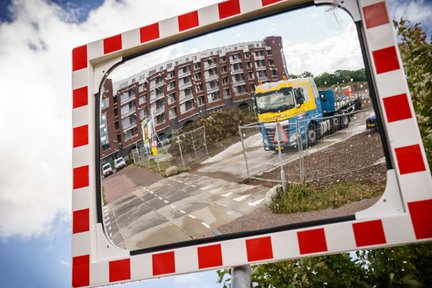
That also applies to the cleaning in Willemspoort-Zuid, Remco adds. “The premise for the design is: no façade maintenance installation. You have to be able to clean the windows from inside. That’s not just safe, it reduces service costs for the residents. But the architect’s design does not yet meet our safety standards, according to an assessment by Aboma, our external health and safety advisor. So we will have to consult with the architect again, but that’s unavoidable. Safety is also about open and honest discussions with each other.”
Order pickers
Many people think that building in open countryside, as in Hoog Dalem, is not so dangerous, says Maarten. “After all, you have more space for the building site and logistics operations. But therein lies the catch: space can make you complacent.” At the same time, he acknowledges that inner city redevelopment projects are frequently highly complex puzzles. But here too it is possible to embed safety at an early stage, at least if you think about it in advance. For instance, in the Vertical project in Amsterdam-Sloterdijk – “real postage stamp building” – Heijmans is using order pickers, which pick up the required building materials from elsewhere. The idea behind this: the fewer transport movements the better.
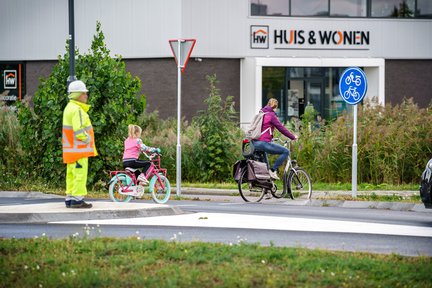
With a view to safety, the Eindhoven region already has a number of building hubs, says Gabriella. And another measure they discuss as early as the design phase is the separation of the building traffic from regular traffic. Safety is part of the planning, she notes: “You can only carry out heavy lifting at busy traffic junctions, like a railway station, in the evenings and at weekends. This is when the risk is the smallest for cyclists, pedestrians and travellers. And it means less stress for our colleagues operating the cranes.”
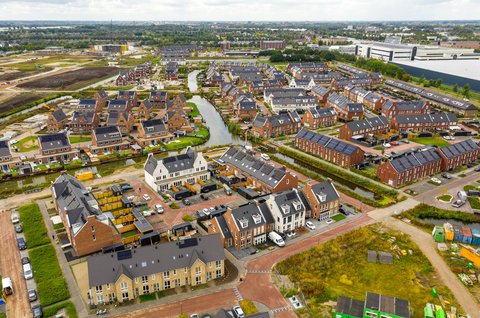
Gables
Architectural freedom can also conflict with safety, they all know from experience. Maarten, generously: “I understand that architects want to design more than just boxes. But a greater understanding of the potential dangers would certainly not go amiss. In the execution phase, you sometimes have to really bend over backwards to realise their ideas. We don’t want to do that anymore. We need to be ahead of the game.”
Gables are infamously difficult on that front. Very popular with architects and residents, but at a height of five or six metres – and sometimes with as many as three gables per house – it is sometimes madness, says Maarten. “In the attics, you barely have room for your scaffolding, and you’re getting in your own way a lot of the time. All those angled walls create spaces you can only access using a ladder and that is definitely not safe.”
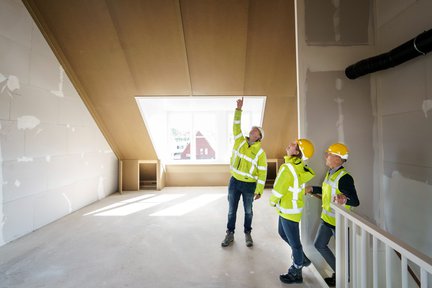
Elsewhere in this neighbourhood-in-progress, he shows us an example of what he means. He points to a light fitting and a smoke detector very high up in the cam of the ceiling. Very difficult to install, but also a lot of – potentially dangerous - work for the resident if they need to replace them. Maarten is happy he is able to show this to his colleagues from Property Development and Design Management on the spot. “Hopefully, we can approach this differently in a subsequent project. By thinking about this at an earlier stage, we can certainly design something that the home buyer wants and that is easier to fix.”
Gabriella agrees with him, but refuses to put all the blame on architects: “Builders and installation advisors can also play their part in this. Cantilevered balconies and things like two-story spaces may make homes look special, but they’re not always easy to build. It’s great that we’re now discussing these things with each other. You create safety together, with the whole team, from early designs right through to the operation of a building.”
